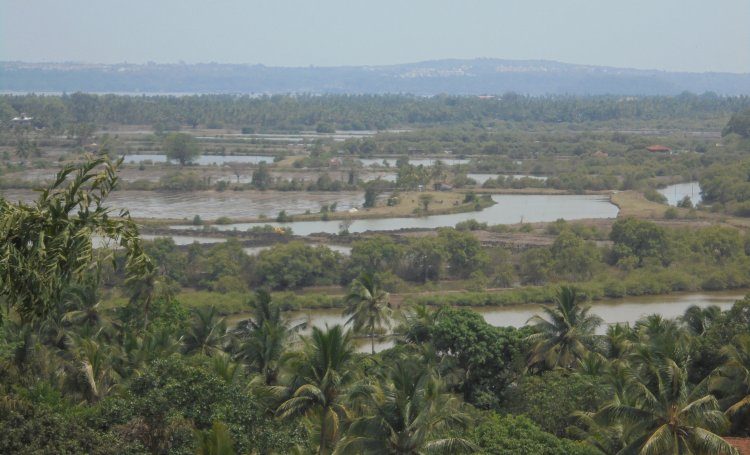It is considered that the Khazan lands were created many centuries ago and pre-date the Christian and Islamic occupation of Goa. In fact one of the earliest inscription mentioning the Khazan lands; belongs to a sixth century AD copper plate. The inscriptions on the copper plate mentions a local king donating Khazan land.
What are Khazans?
“Khazan lands have been subjected to planned and contour-integrated topo-hydro-engineering by local communities to produce reasonably sustainable productive agro-ecological and agro-economical systems,” said Professor of microbiology Nandkumar Kamat in a report.
They were once wetlands with a mangrove forest cover over them. Early ancestors of the lands cleared the forest to make use of the land for three major economic activities:
Agriculture
- Salinity tolerant paddy crop is cultivated. The land is considered to be fertile.
- Paddy coconut palms dot the lands.
Fish production
- The waters inside the Khazan lands are used by fish to lay their eggs.
- The area hosts ponds with a substantial fish population.
Salt making
- Some of the lands are filled with saline water and left to dry.
- Evaporated water leaves salt on the surface. These lands are divided into pans.
- Salt is than sold commercially.
The Khazan lands are also considered to be important for recharging ground water levels in the nearby areas.
Topography
- The Khazan lands are former wetland areas which are protected by bunds on the outer side from ingress by the brackish estuarine water.
- The water flow into the lands is regulated by sluice gates that are operated at the outer bunds.
- Besides outer bunds, inner bunds with the help of sluice gates regulate the flow of water into the lands.
- The bunds and sluice gates need to be regularly maintained.
- Negligence leads to seepage of water from the estuary. This leads to increase in salinity of the water inside Khazan lands which destroys the paddy crops.

The inner bunds are connected by cross drains to let the water flow and drain smoothly. Poim is a depression in the land, it stores access water usually produced during storms or high tides. Mangroves outside the outer bund act as a barrier between tidal waves and decrease their erosive effect.
Current status
The Khazan lands in regards to agriculture are slowly being abandoned. The salt making too is witnessing a decline. However, fish production is still popular. The lands if not used may be reclaimed by Mangrove forest.
“If the khazans are not used productively, or if they are just inundated and left, they are at risk of mangrove infestation. Mangroves may be the nursery grounds for the fisheries, but we should not let them take over the khazans,” Sharmila Monteiro, director of fisheries in a report.
Khazan lands were a gift from the ancestors of Goa which are soon turning into mosquito breeding facilities. Action needs to be taken to preserve them.


